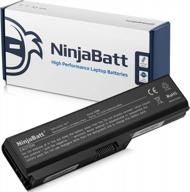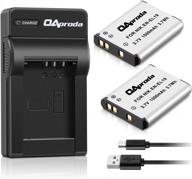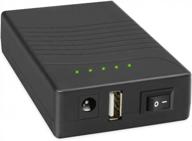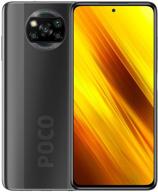
Review on Get the Ultimate Samsung Galaxy S20 Ultra 5G - Factory Unlocked & Packed with Long-Lasting Battery, Facial Recognition, and 128GB Storage in Cosmic Gray US Version by Anastazja Pajk ᠌

Nice product, happy with my purchase and may buy again.
I only went through the cameras, since the phone was purchased 90% because of them. I won’t take photos from cameras, there are a lot of them on the network in any shooting conditions. As a result, I came to this conclusion. If you don’t need 13mm and 103mm when shooting a scene and fairly even non-contrasting lighting on the object (which does not require an increased dynamic range), it’s better to shoot in the [4:3 108mp] mode, the detail is quite satisfactory and the picture looks much better. (file size increases from 3 to 25 megabytes) Otherwise, shoot in [4:3; 16:9; 1:1 and Full], while to preserve the detail of the 4000x3000 image, do not use zoom from 1 to 3.9x (as the super pixel function is enabled. Although Samsung promises in the matrix advertising that "HM1's Nonacell and 108Mp technology provides direct pixel conversion, which means that pictures taken with a 3x zoom retain high image quality at 12 MP. In this case, the zoom buttons are conveniently implemented - you can immediately switch to 13 and 103mm by selecting the camera in the form of an icon with a tree. Also, do not use zooming from 0.5x to 0.9x (since the image is 4000x3000, and a 13mm matrix is already 12 megapixels)
- Three cameras translated into 35mm equivalent lenses: a) ultra wide angle 13mm, 12 megapixel without stabilization. the image from the matrix is programmatically zoomed 1.8x from 0.5 to 0.9x b) wide-angle 25mm, 108 MP Nonacell matrix with OIS stabilization, the image from which is programmatically zoomed up to 6x in the shooting mode [4:3 108mp] and up to 3.9x in the mode [4:3; 16:9; 1:1 and Full]. In [4:3; 16:9; 1:1 and Full] image size is 12 megapixels, due to the combination of 9 photodiodes under one filter (red, green, blue) into one "super pixel", which allows you to expand the dynamic range (different exposures of photodiodes under 1 filter) or reduce noise in poor lighting conditions (the sum of information from 9 photodiodes reduces noise). In the [4:3 108mp] mode, 9 photodiodes are debayerized already under different filters, which provides detail (reducing the range) c) telephoto lens 103mm, 48MP with OIS stabilization, turns on when zooming 4x in mode [4:3; 16:9; 1:1 and Full] and up to 100x zoomed by software (with resulting quality). But since in the [4:3; 16:9; 1:1 and Full] the image is no more than 4000x3000 (12MP) and 103mm optics cannot resolve 48 megapixels pixel by pixel for effective zooming, as well as the need for a margin of pixels around the frame for the software stabilizer to work (if available), at best, the quality is higher 8x zoom is not worth counting With this in mind, the pros are: 1. Excellent stabilization, good headroom for handheld shooting in poor lighting conditions, and incl. on a telephoto lens 2. Good dynamic range of all three cameras at low ISO 3. Sharpness in the center of the frame 4. The presence of 13mm and 103mm as separate cameras is universal (in s20 and s20 + there is no telephoto lens and optical zoom, zooming is carried out with a 26mm 64mp matrix) 5. Larger 1/1.33" ISOCELL Bright HM1 sensor (was 1/2.5" before). 6. Increase the range or reduce noise by combining 9 diodes of one filter into 1 pixel
- 1. In PRO mode. 13mm and 103mm cameras are not included. Zooming occurs only due to the 25mm camera matrix. This is for me the most inexplicable work of Samsung. 2. Also in the [4:3 108MP] mode, the 13mm and 103mm cameras do not turn on. Samsung apparently implies that since they do not have 108mp, then they are not suitable for this mode. But the meaning for the user is different - the inclusion of the maximum resolution from the cameras. In this mode, 13.25 and 103mm cameras could work with images at 1220228 and 48 megapixels, respectively, providing ease of use. But no, Samsung thought that since it set the selection to [4:3 108mp], then when shooting, there would be no need to quickly switch to other cameras. 3. As a result, it is not possible to set a 48mp image when shooting at 103mm. Frame only 4000x3000 pixels (12mp). At the same time, the matrix is \u200b\u200ba usual Bayer, not Nonacell (for the possibility of digital zooming up to 100x) with a size of 1\2", why such a limitation is not clear. 4. Inconveniently implemented exposure adjustment in the "Photo" mode. It is necessary to press on the object, a scale appears, which must be adjusted in time, while it is designated as brightness adjustment. And I would like a separate "Exposure" button or even menu settings for the photo. 5. There are no color settings, sharpening, noise reduction, etc. for the image. The way the image conversion from the matrix to jpg is configured by Samsung does not suit me. or have to suffer with raw 6. Strong noise reduction with artifacts in low light conditions, which indicates the noise of the 108MP sensor (even in super pixel mode) and 48MP All shortcomings are software, and could be improved by an ate if desired by Samsung
New products
Comments (0)
Similar reviews
Top products in 📱 Cell Phones
Another interesting products

NinjaBatt High Performance Battery For Toshiba A665 And L755 Series - 6 Cells/4400MAh/48Wh

40 Review

Perixx Peripad-202H Black Wired Numeric Keypad With X-Scissor Keys, 2 USB Hubs, And Tab Key For Enhanced Productivity

44 Review

2 Pack EN-EL19 Battery & Rapid USB Charger For Nikon Coolpix S32-S7000 Cameras - OAproda

41 Review

Rechargeable 12V 3000MAh Lithium Battery Pack: Power Bank For LED Strip, CCTV Camera & More

43 Review







